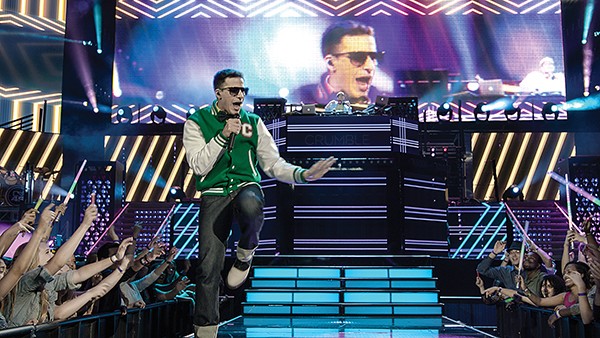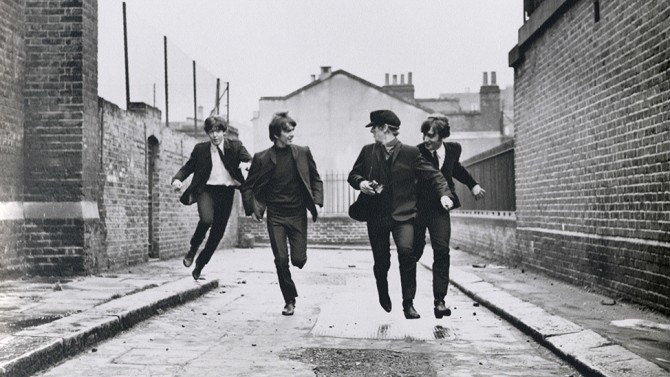I was 15 the first time I played with a real rock-and-roll band. The first song we learned was “Get Back” from The Beatles’ final released album Let It Be. We started with that one because it was easy — or at least it sounded easy. That’s when I learned that great rock music is deceptively simple. It wasn’t hard to hit the notes. What was hard was hitting them at exactly the right time, with exactly the right feel. We must have jammed on “Get Back” for an hour trying to get it to sound right, which of course we never did.
I went on to play in rock bands for 30 years. In college, I played a lot of gigs and made a lot of money. After college, I played cooler shows, made good records, and didn’t make much money. I’m still doing it — my last album was released in 2020, got good reviews, and even turned a modest profit.
Maybe that’s why, in the new Beatles documentary Get Back, when we see Paul McCartney, frustrated because his bandmate John Lennon is late for rehearsal, plop down on a chair in the corner of a soundstage and pound out “Get Back” off the top of his head, it’s kind of like watching a tape of yourself being conceived: profound, moving, and also a little icky. Paul, it turns out, was just a band geek like the rest of us.
Let It Be was recorded in January 1969. Having spent 1966-1968 revolutionizing studio recording, the plan was to get back to their bar band roots by writing a new album’s worth of songs and premiering them with their first live concert in three years. Crucially, they were going to do it all in front of director Michael Lindsay-Hogg’s cameras, in a soundstage at Twickenham Studios, where A Hard Day’s Night and Help! had been filmed. That meant they had essentially three weeks to write 14 songs, whip them into shape, and record them in front of an audience. This was difficult, but not out of the question for the band who had changed pop music in one day with the 10-song session that produced Please Please Me. Legend has it that the sessions ended in acrimony, with George Harrison briefly quitting, and the band trying to salvage the project with an impromptu live show on the roof of their Apple records studio. The album was shelved, and the band returned to the studio for Abbey Road. After they broke up in early 1970, Let It Be was finally released, and Lindsay-Hogg’s feature documentary became notorious for capturing the “breakup of The Beatles.”
A few years ago, Lord of the Rings director Peter Jackson acquired the rights to the Let It Be sessions footage, which encompassed more than 60 hours of film and more than 180 hours of audio. He spent four years editing the chaotic mess down to a “crucial” 468 minutes.
If your first reaction is, maybe he could have gotten a little more crucial than eight hours, you’re right. This is not a film with a punchy narrative; in part three, Lindsay-Hogg complains that he has lots of footage, but no story. This is the ultimate hangout picture, because you get to hang out with The Beatles. That’s what’s so compelling — you’re watching some of the greatest artists of the last century at work.
For a seasoned show dog, it’s fascinating to watch the greatest of all time systematically violate the rock band rules. First, the rehearsal space is sacred. Don’t record the writing process, or the frank discussions that take place there. Second, no significant others in the studio. This is known as the “Yoko Rule,” which Get Back shows is unfair. Yoko Ono is omnipresent and clingy, sitting next to John in the early going, before getting bored and leaving as the sessions drag on. She’s a non-factor in the lads’ conflict, which largely stems from trying to do the delicate mental work of composing songs while under the camera’s gaze.
The Beatle who is up to the challenge of working in the spotlight is Paul. In one stunning moment, while John is meeting with Lindsay-Hogg to plan the ill-fated concert, Paul is in the background, noodling around on the piano, and “Let It Be” emerges. When he takes it to the group, and The Beatles’ eyes light up, it’s like watching Leonardo da Vinci sketching The Last Supper. Get Back shows that The Beatles, often reduced to cartoon characters, were human after all — and that makes their art even more extraordinary.
The Beatles: Get Back is now streaming on Disney+.




